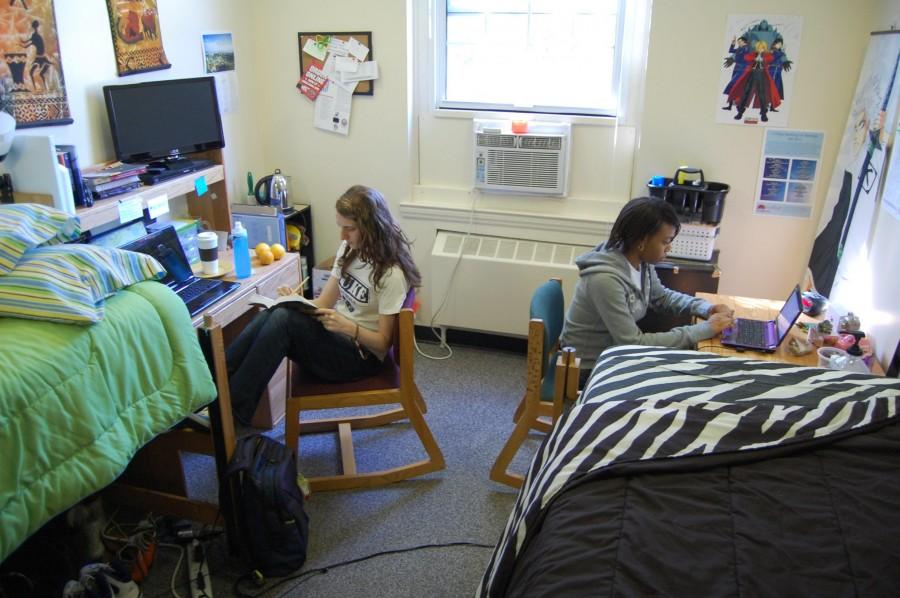Guilford College does not have unlimited space. Offices are not bigger on the inside and storage space cannot be found by walking by the right wall a few times.
The availability of physical space on campus is an issue faced by many schools as small as Guilford. With the college experiencing some recent growth, finding room to support everyone’s needs has become an issue.
“With enrollment growth over the past decade, there is little space left,” said Vice President for Administration Jon Varnell in an email interview. “In fact, it’s the reason that (the Office of) Advancement is across the street at Quaker Village.”
Space is a challenge for many aspects of Guilford life. Many student organizations find difficulties in equipment storage caused by limitations of space.
“We’ve always been tight on space, but it’s gotten even tighter,” said Erin Fox, director of student leadership and engagement. “We have all these active groups. The problem is all these groups come with stuff.”
Last year, Outdoors Club campaigned to purchase a storage shed for club equipment. Men’s Club Soccer, Yachting Club, and both Men’s and Women’s Rugby joined Outdoors Club in the purchase, with a matching contribution made by Community Senate.
This solution does not work for other clubs. Fencing Club and Archery Club require more secure and climate-controlled storage space for their equipment. Yachting Club’s library also requires more delicate storage, and has been housed in the SOC since the office Yachting had been using was repurposed.
“We sort of made the decision that organizations on campus that provided some sort of public service or were representative in some way would get access (to club-specific offices),” said Fox.
While space for storage and clubs is limited, space in on-campus housing is overabundant.
Housing traditional students is not as much of an issue. In stark contrast to the class of 2013, Guilford’s largest incoming class, this year’s first year students have left nine empty beds in Binford, and the basement rooms in Milner are unused.
“To help fill the bed spaces we did offer single room buyouts in Bryan and anywhere there were large needs,” said Kris Gray, residential living coordinator.
The empty beds in residence halls are a serious issue.
“It hurts us all, plain and simple,” said Vice President for Student Affairs Aaron Fetrow in an email interview. “Empty beds (equals) lost revenue and that is lost revenue that must be made up somewhere, with the most likely source being increases in tuition.”
Residence halls are not the only campus spaces not living up to their full potential. The Community Center has long been underused, but there is hope it will get the attention it should after recent renovations. Hege Library has also been identified as a space that could be used more efficiently.
“The Community Center area that was remodeled last spring was a great example of a very under-utilized space that hopefully now is better utilized,” said Varnell. “I think there (are) many spaces in the library that could be better used.”
Fetrow also sees lost potential in library space.
“I know we have a tremendous amount of space in the basement of the library, but then again, it is the basement of the library,” said Fetrow. “Not exactly a glamorous location.”
While some could ask for more campus space, others have a more positive outlook.
“With renovations to Duke, King, Alumni Gym offices, Archdale, and so on, faculty spaces (and classrooms) have had a lot of investment over the past decade,” said Varnell. “Folks could always say they would like more, but I think we are fine.”

